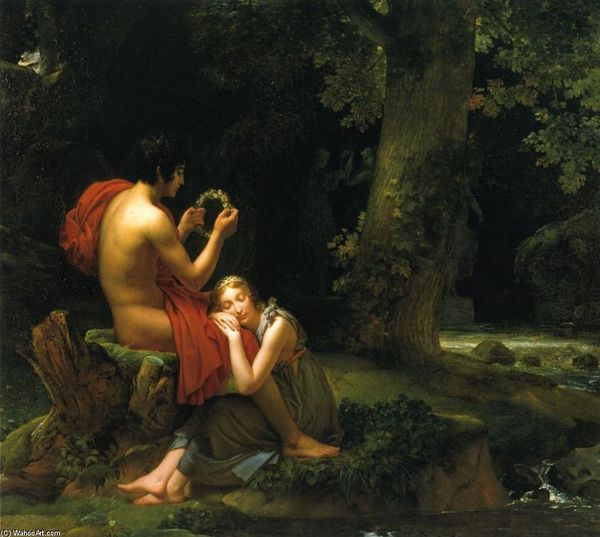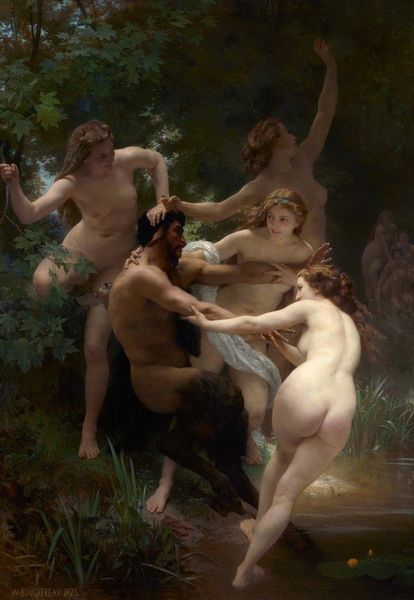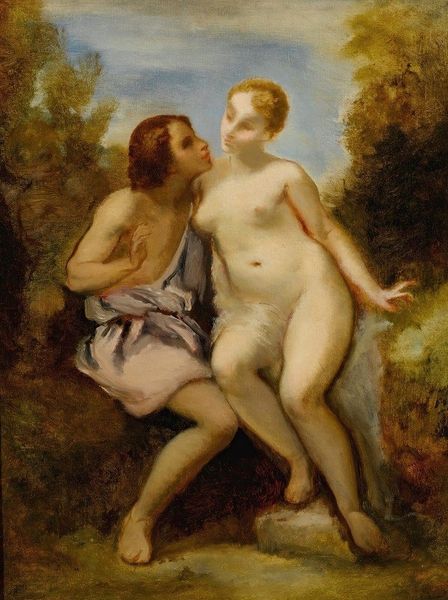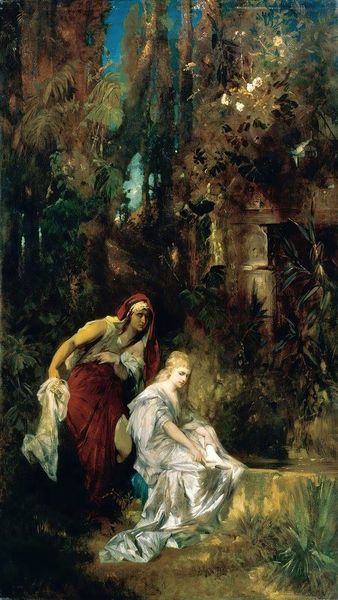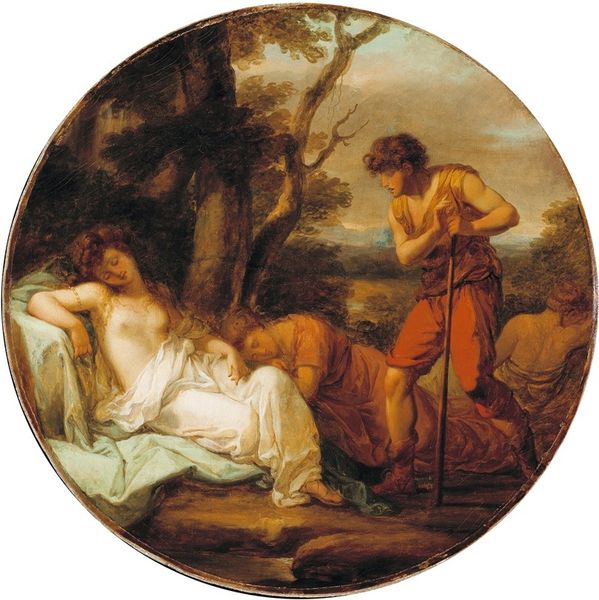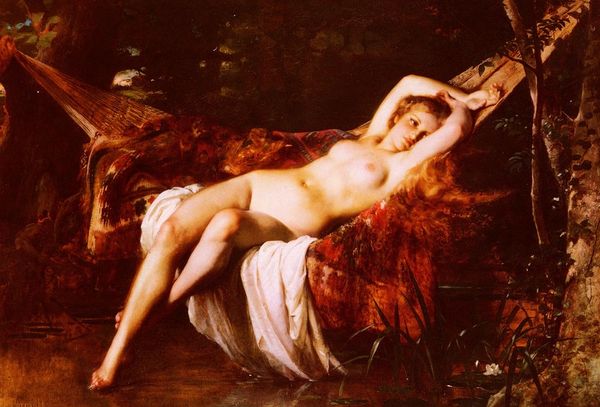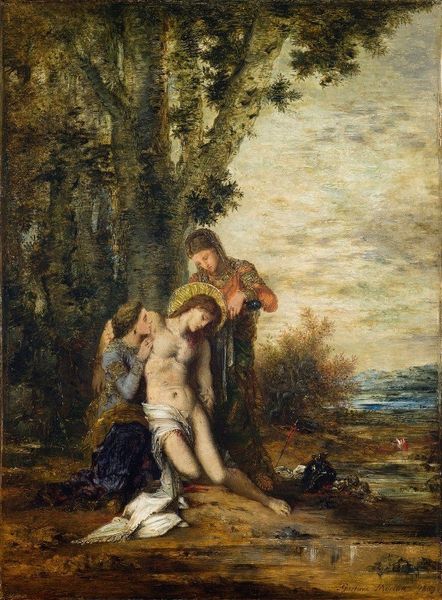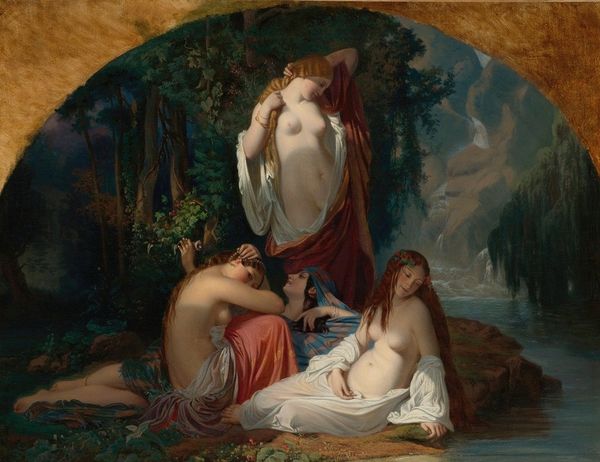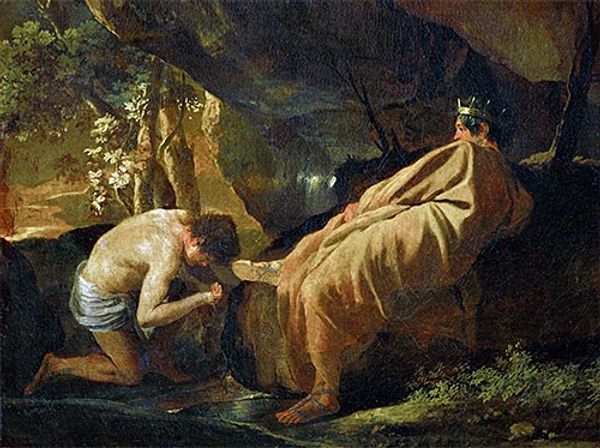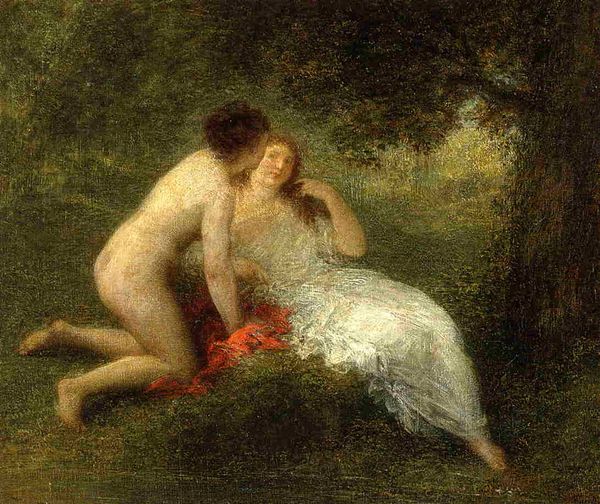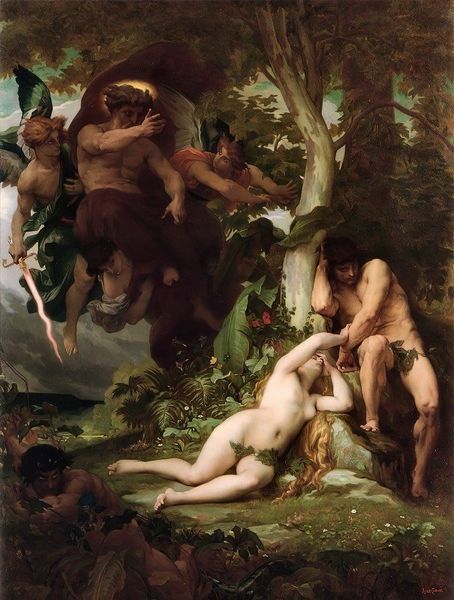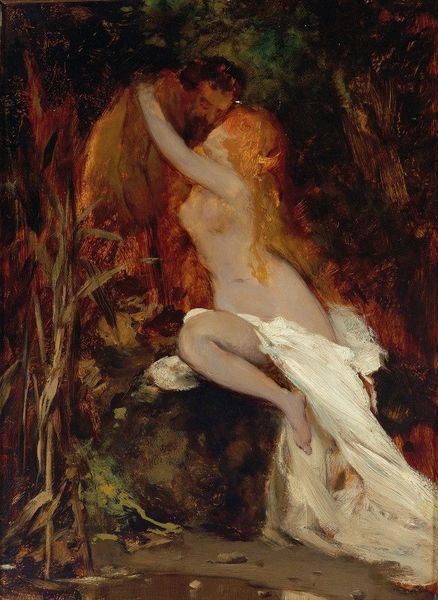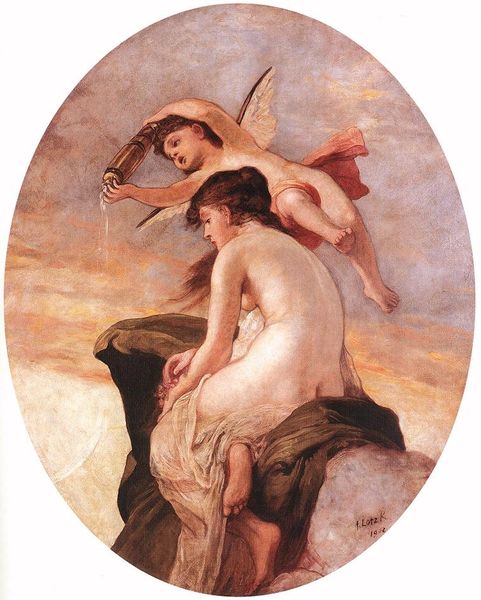
Copyright: Public domain
Curator: Konstantin Makovsky completed this oil painting, entitled "Satyr and Nymph", in 1863. Editor: What strikes me immediately is its air of theatricality. The composition, the lighting… it feels staged, even artificial despite the supposed natural setting. Curator: Note the lusciousness with which Makovsky handles the oil paint. Look closely at the grapes, the leaves. This isn’t just rendering; it's a celebration of texture and color. Consider, too, that such scenes offered an avenue to depict the nude body, catering to a specific consumer desire for classical themes rendered with contemporary technique. Editor: Exactly. Those grapes aren't just decorative; they are an explicit reference to Bacchus and a long lineage of associated symbols—intoxication, revelry, and unchecked desire. The nymph's pose and the satyr’s upward gaze enhance that suggestion. I wonder what specific narrative or belief about ancient, even base, pleasures Makovsky aimed to capture. Curator: To me, the art historical significance resides less in the “what” and more in the “how.” Oil paint in 1863 had become readily available and accessible. Therefore, who are the producers of pigments and canvases? Who makes brushes? And how did the Romanticists harness the technological advancement to craft images appealing to bourgeois taste? Editor: Certainly, that wider economic picture shaped Makovsky's options as an artist, and therefore impacted the work we see here. However, focusing on how mythology itself served as a vessel for social and psychological concepts within 19th century culture yields equally crucial knowledge. What unconscious fears and fantasies might those ancient stories reveal? Curator: Well, I appreciate you highlighting this, even if our own readings remain, at times, quite separate. I’m just struck by the craftsmanship involved, the clear labor and the very tangible ingredients and material processes behind a depiction so devoted to representing imagined, mythical ease. Editor: And for me, pondering what persists and resonates through familiar stories—what unspoken longings continue to find expression. Curator: True enough, the persistence of process and production informs and is itself, informed.
Comments
No comments
Be the first to comment and join the conversation on the ultimate creative platform.
